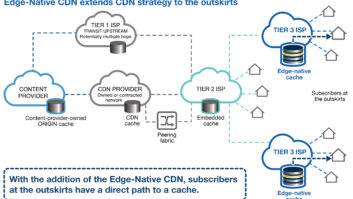
The 2015 ARRIS Consumer Entertainment Index (CEI), reveals that consumers demand Wi-Fi without limits, and highlights a growing disparity between expectation and reality when it comes to Wi-Fi at home. The findings also point to a connection to the expanding ecosystem of devices and growing popularity of streaming services.
Worldwide, the average home now has six video devices connected to its Wi-Fi network, and the average household spends almost 6.5 hours each week streaming a subscription service. Moreover, four out of five (81 per cent) of those who stream now do so at least weekly, up from 72 per cent just last year. There is a clear connection between Wi-Fi and mobile TV too, with nearly three-quarters of people who watch mobile TV at least once a week, using Wi-Fi to do so.
These trends are a likely culprit of the internet issues that nearly two-thirds of global consumers experience, as well as their renewed interest in high-speed internet in every room of the house.
The research underscores new qualifications for the rise of both mobile TV and binge-viewing. While the popularity of mobile TV continues to increase, more than half of consumers are now watching TV on-the-go. The potential for growth is greatest in older demographics, where barriers of inconvenience and cost continue to challenge broader market adoption. Meanwhile, binge-viewing has evolved into a very personal and solitary activity for 60 per cent of binge-viewing consumers.
These trends represent a number of opportunities for service providers to make it easier for consumers of all ages to download or stream content, to customise content and services to the individual consumer experience, and to solve connectivity issues by giving consumers a high-speed wireless connection where it is needed.
Sandy Howe, senior vice president, global marketing, ARRIS, commented: “The ARRIS CEI research offers our customers invaluable insight into the evolving consumer interaction with entertainment technology and content. It underscores four major trends: Consumer dependence on Wi-Fi and consequent frustration with its quality; the concurrent growth and hindrance of mobile TV adoption; the growing preference for downloading vs. streaming mobile content; and the increasingly personal nature of binge-viewing.
“All of these trends point to a tremendous opportunity for service providers and programmers to customise their offerings to these new consumer trends and to ensure the quality of the home’s Wi-Fi network, which increasingly is bearing the weight of this evolution in services.”
The report also found that consumers prefer to download rather than stream mobile content. Nearly three-quarters of downloading consumers say it is important to be able to download content to a device so they can watch it on-the-go without an internet connection, rather than having to rely on cellular connections to stream. Also, 73 per cent of the respondents who watch mobile TV use Wi-Fi to do so. This presents an opportunity for service providers to facilitate content downloads to mobile devices.
The past year has seen a nominal increase in OTT users (from 93 per cent to 94 per cent) and a similarly nominal decrease in broadcast TV users (from 97 per cent to 96 per cent). This highlights a disparity between industry expectation of these services and their actual rate of acceleration and suggests that broadcast TV remains king for now.







